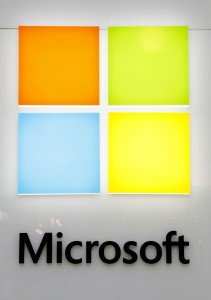SAN FRANCISCO – Microsoft on Wednesday courted application makers with a “re-blended” version of the overhauled Windows 8 operating system released late last year.
Windows 8.1 incorporated feedback from users and developers, and came with the promise that the US software giant was speeding up its release cycle to adapt to the dizzying pace of innovation in consumer technology.
“We pushed boldly in Windows 8 and got lots of feedback,” Microsoft chief executive Steven Ballmer said while kicking off the company’s BUILD developers conference in San Francisco.
“Users said ‘Why don’t you go refine the blend?,” he said. “We will show you a refined blend of our desktop experience and our modern experience.”
Cheers burst from the audience when Ballmer assured them that changes in Windows 8.1 included a return of the “Start” button icon on screens that provided shortcuts to commands and applications.
Microsoft made a preview version of Windows 8.1 available for developers online at preview.windows.com and said this was just the beginning of a shift to “rapid release” cycles for software.
“Rapid release cadences are absolutely essential to what we are doing,” Ballmer said.
“It is about the transformation that we are going through as a company to move at an absolutely rapid release cycle; our transformation from a software company to a company building software-powered devices and services.”
Windows 8.1 remains true to the vision of an operating system tuned for touch-screen controls and multi-gadget lifestyles increasingly revolving around tablets and smartphones, according to Microsoft.
“When we rolled out Windows we talked about touch, touch, touch,” Ballmer said, noting that when people went to stores there was a dearth of Windows-powered touch computers.
He said there would be a “proliferation” of small Windows tablets released in the coming months.
Microsoft used the keynote presentation before BUILD’s six thousand attendees to showcase Windows-powered devices ranging from Nokia Lumia smartphones to Lenovo and Acer devices as well as Microsoft’s own Surface Pro tablet.
“You will see an outpouring of new devices that are notebook computers in every respect yet have touch fully integrated and usable,” Ballmer said.
Microsoft also announced that it was opening its Bing Internet search engine to developers so they can harness its capabilities to power features inside applications.
Microsoft is keen to tap into the creative talent of software developers behind hip, helpful, or fun ‘apps’ that can dictate the success of failure of smartphones, tablets and other Internet-linked consumer gadgets.
New-generation Apple software for iPhones, iPads, iPods, and Macintosh computers was showcased at a Worldwide Developers Conference here earlier this month, just weeks after a Google event starring Android and Chrome.
Ballmer said that the number of apps in the Windows Store will top 100,000 this month, while downloads have climbed into the hundreds of millions.
“The number of apps we see coming into the store is phenomenal,” Ballmer said.
Microsoft is under pressure to adapt to a huge shift in how people engage with computers, according to Forrester analyst Charles Golvin.
Smartphones and tablets have vanquished the days when people devoted the bulk of computer time to Windows-powered desktop or laptop machines.
“Any talk of the personal computer being dead is overblown and ridiculous,” Golvin said.
“What matters is being everywhere. PCs still matter; tablets matter, and smartphones matter most if you look at the amount of time people are spending in front of screens.”
The overhauled Windows 8 operating system released in November was designed to power the array Internet-linked devices, but some people balked at having to adapt to the new “metro” tile-style user interface.
Some modifications in Windows 8.1 were made to return features that were missed, such as the beloved “Start” button.
“Microsoft has to convince people there are benefits to the pain of adjusting to Windows 8,” Golvin said.
